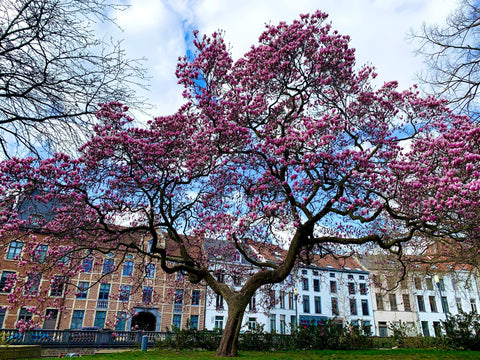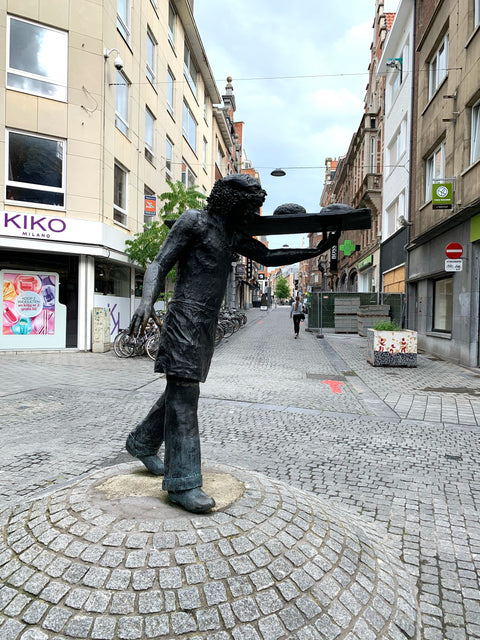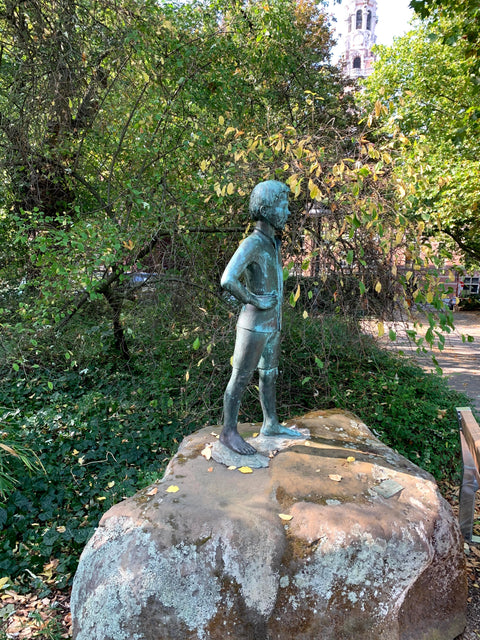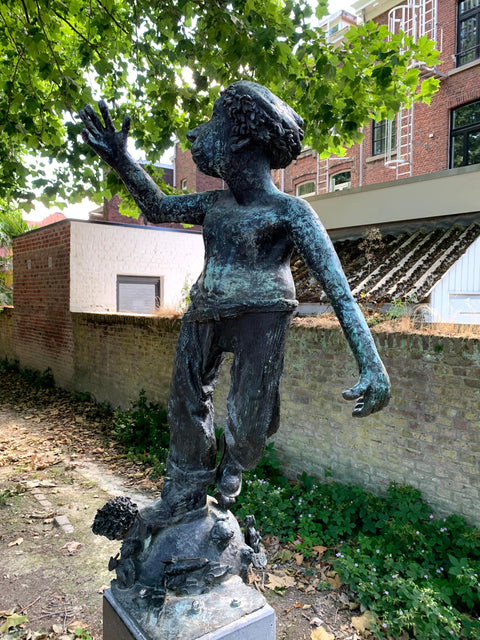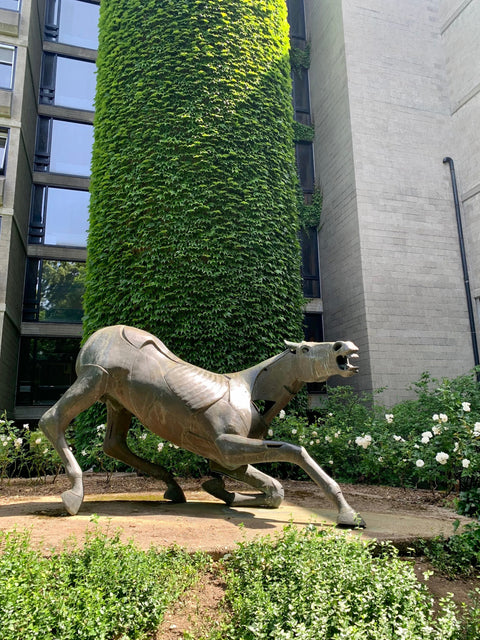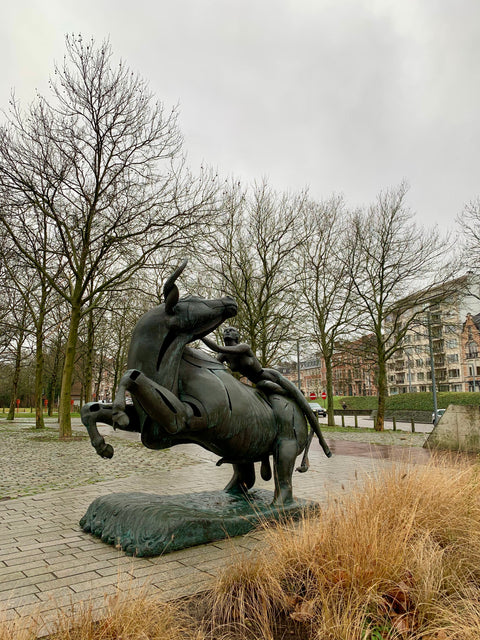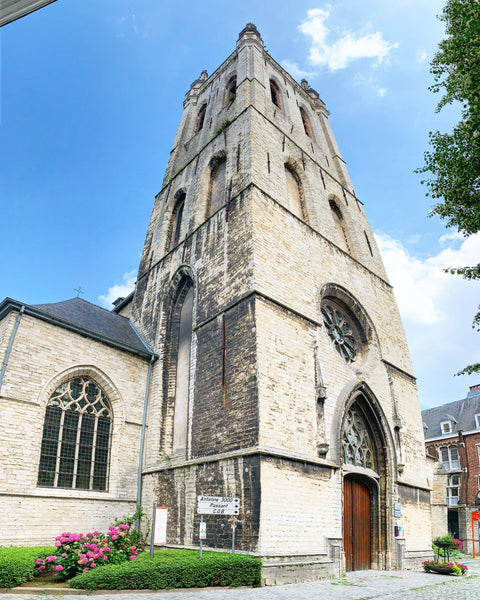A Green Gem by the DyleNestled near the bend of the Dyle River, Dijleterrassen is one of Leuven’s hidden gems—a...
Dorre the Baker, a bronze statue by Roland Rens, was unveiled in 1979 to honor Leuven’s baking tradition and the important role of local bakers in community life.
The De Witte statue at KU Leuven, unveiled in 1985, depicts Ernest Claes’ mischievous literary hero Louis Verheyden. Standing barefoot with hands on hips, it symbolizes both his playful spirit and his dreams of greatness.
The Kamerood 60 statue in Leuven, created by Jan Rosseels in 2000, symbolizes the journey of life with motifs like a globe, a snail, baby, and flowers. Gifted by the Mannen van 60, it remains a unique modern artwork despite vandalism damage.
The Falling Horse sculpture by Rik Poot, located in Leuven’s Erasmushuis garden, depicts a tragic, collapsing horse. It symbolizes solidarity among students, reminding them of the strength found in supporting each other.
The De Ontvoering van Europa statue in Leuven, created by Rik Poot in 2004, shows Zeus abducting Europa on a bull. Installed at Provincieplein in 2008, it stands as one of the artist’s final monumental works.
The M-Museum Leuven, designed by Stéphane Beel and opened in 2009, houses more than 52,500 artworks. From medieval masterpieces to post-1945 Belgian art, it is a hub of history, culture, and innovation.
St. Gertrude’s Church in Leuven, a former Augustinian abbey, is famed for its “tower without nails” and stunning wooden choir stalls. Damaged in WWII, it was carefully reconstructed and remains a highlight of Leuven’s heritage.


